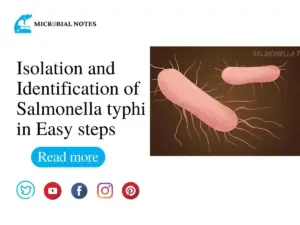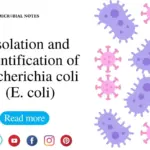Introduction
As a microbiologist, one of the most important components of our study is the appropriate preservation of bacteria cultures to maintain their viability and lifespan. In this post, we will look at the numerous short-term and long-term storage strategies utilized in microbiology, as well as the concepts and benefits of each approach. These techniques are critical for keeping significant bacterial strains for research, medicinal, and industrial purposes. Let’s explore the interesting realm of microbial storage!
Short-term Storage
Transferring to New Media on a Regular Basis
Short-term storage often involves subculturing bacterial colonies in fresh growth medium on a regular basis. This approach prevents the depletion of critical nutrients and the accumulation of toxic metabolites, allowing the microorganisms to proliferate and survive indefinitely. Frequent transfers to new medium not only preserve genetic stability but also allow strains to be easily retrieved when needed.
Refrigeration
Refrigeration is a popular and simple method for preserving bacterial cultures for a short period of time. Maintaining the cultures at temperatures ranging from 2°C to 8°C reduces metabolic activity, lowering the risk of mutations and extending viability. This approach is appropriate for non-fastidious organisms and is particularly beneficial when cultures must be preserved for a few weeks to a few months.
Glycerol preservation at -20 °C:
Glycerol-based preservation is an excellent approach for extending the shelf life of bacterial cultures. The development of ice crystals that can injure cells during freezing and thawing is reduced by floating the bacteria in a glycerol solution and keeping them at -20°C. This method offers a cost-effective and simple way for preserving microbial strains for extended periods of time, generally up to several months.
Stab Culture
Stab cultures include inoculating a solid medium with the bacterial sample directly with an inoculation needle or loop. The culture is then incubated under growth-friendly conditions. Stab cultures are especially useful for keeping anaerobic bacteria because they produce an oxygen-depleted environment that allows these oxygen-sensitive microbes to survive.
Medium cooked beef (anaerobes)
Cooked-meat media is a form of growth medium that promotes the growth of anaerobic bacteria. It is made by cooking lean beef, then eliminating the oxygen and adding nutrients to promote bacterial growth. The low oxygen environment guarantees the survivability of anaerobic organisms, allowing them to be stored for a short period of time without being exposed to hazardous air oxygen.
Long Term storage
-70°C freezing point
Freezing at ultra-low temperatures, such as -70°C, provides excellent microbiological preservation for longer storage. Bacterial strains frozen at this temperature can be kept alive for several years while retaining their original properties and limiting genetic changes. The use of cryoprotective chemicals in conjunction with freezing improves cell viability during the freezing and thawing processes.
The Paraffin Method
The paraffin technique, commonly known as paraffin embedding, is an alternate method for storing bacterial cultures for long periods of time. Bacteria are combined with liquid paraffin wax and preserved in sealed containers in this approach. The paraffin works as a protective barrier, sheltering the bacteria from harmful environmental conditions and allowing them to survive for a long amount of time.
Cryopreservation
Cryopreservation is an advanced long-term storage technology that includes storing microbial cultures in liquid nitrogen at extremely low temperatures (about -196°C). This approach successfully stops all biological activity, putting the cells in a condition of suspended animation. Cryopreservation is the gold standard for preserving microbe viability over lengthy periods of time, even decades.
Lyophilization (freeze-drying).
Must read: What is lyophilization? – Its Process and Application
Lyophilization, often known as freeze-drying, is a novel preservation technique that involves eliminating water from bacterial cultures at low temperatures and under vacuum settings. The cellular structure is conserved by immediately converting frozen water to vapor, and microbial cultures can be kept in a dry condition. Lyophilized bacteria have a longer shelf life and may be rehydrated simply when needed.
Bacterial Recoveries from Lyophilized Storage
Rehydration and revival are necessary to recover bacteria from lyophilized storage. By adding an appropriate liquid medium, the lyophilized material is returned to its original condition. The rehydrated cells are then transferred to new growth medium, which provides them with the nutrients and environment required for resurrection and proliferation.
Applications of preserved Bacteria
Bacterial preservation is important in many scientific areas because it allows for the long-term survival of bacterial cultures. Preserved bacteria are used in a variety of businesses and research disciplines, providing unique benefits and insights that deepen our understanding of the microbial world and improve practical applications.
Biotechnology and Industrial Applications
Preserved microorganisms are extremely useful in biotechnology and industrial applications. These bacteria have unique biochemical capabilities that may be used to create a variety of biotechnological products and commercial operations.
Preserved bacterial strains are used to make enzymes, which act as catalysts in a variety of biological activities. These enzymes are used in a variety of sectors, ranging from food and beverage processing to pharmaceutical manufacture. Researchers provide a steady supply of these vital catalysts by keeping certain enzyme-producing bacteria, adding to the efficiency and sustainability of industrial operations.
Additionally, conserved microorganisms are required for the generation of biofuels and biopolymers. Certain bacterial strains may convert organic materials into biofuels such as ethanol and biodiesel. The preservation of these specialized bacteria ensures a steady supply of microorganisms for large-scale biofuel production, opening the path for a greener and more ecologically friendly energy industry.
Preserved bacteria are essential in bioremediation in the field of waste management. Certain bacterial species are uniquely capable of degrading hazardous chemicals and toxins found in soil and water. The preservation of these pollutant-degrading bacteria enables their regulated release into contaminated locations, assisting in the cleaning and repair of damaged habitats.
Pharmaceutical Development and Research
Bacterial preservation is an essential technique in pharmaceutical research and medication development. Bacterial cultures are used to investigate the effects of possible medications on specific bacterial strains, assisting researchers in identifying viable drug candidates and evaluating their efficacy.
Preserved bacterial strains are essential in antibiotic research for analyzing antibiotic resistance and susceptibility trends. Scientists may save clinically important bacterial isolates in order to track changes in resistance profiles over time, which will assist in the creation of new and effective medicines.
Furthermore, conserved microorganisms are important in the development of new natural compounds having medicinal potential. Bacteria are prolific makers of bioactive chemicals, many of which have medicinal potential. Preserving distinct bacterial strains from various ecological habitats allows these microbes to be screened for the synthesis of bioactive compounds, which might lead to the creation of novel medications and therapies.
Probiotics and prebiotics are both beneficial bacteria.
Preserved microorganisms are at the forefront of probiotic and prebiotic research and development. When taken in sufficient proportions, probiotics are helpful living microorganisms that offer health advantages, whereas prebiotics are non-digestible dietary components that encourage the development and activity of good gut bacteria.
Lactobacillus and Bifidobacterium species have been widely examined for their potential therapeutic benefits on gut health, immunological function, and overall well-being. These probiotic strains are preserved to protect their viability and stability, allowing the development of probiotic products with constant health effects.
Prebiotics, on the other hand, provide food for good gut flora. The preservation of certain bacterial strains that survive on prebiotic substrates enables targeted enrichment of these bacteria in the gut, contributing to a healthy and balanced gut microbiome.
Bacterial Storage in Agriculture and the Food Industry
Preserved microorganisms play an important role in agriculture by improving soil health and crop yield. Beneficial bacteria create symbiotic connections with plants, boosting nutrient intake and protecting them from diseases.
Rhizobium bacteria, for example, create nodules on the roots of leguminous plants and convert atmospheric nitrogen into a form that the plants can use. Preserving these nitrogen-fixing bacteria offers a sustainable nitrogen source for leguminous crops, decreasing the demand for synthetic fertilizers and supporting ecological balance.
Crop Enhancement Through Microbial Inoculants
Microbial inoculants, which are bacteria-containing treatments, are used to boost plant growth and production. These inoculants contain preserved bacterial strains such as plant growth-promoting rhizobacteria (PGPR) and mycorrhizal fungi.
Preserving PGPR enables for the creation of microbial inoculants that improve nutrient availability, stress tolerance, and disease resistance in plants. These inoculants boost crop yields while reducing the need for chemical fertilizers and pesticides, making them an environmentally benign and sustainable alternative for modern agriculture.
Preservation of Bacteria in Medical and Clinical Settings
Biobanks of Microbes
Microbial biobanks, which house a broad collection of conserved bacterial cultures, play an important role in medical and therapeutic research. These biobanks serve as therapeutically useful bacterial strain archives, supporting research on infectious illnesses, antibiotic resistance, and epidemiology.
Bacterial strains preserved in microbial biobanks are essential diagnostic tools, allowing researchers to precisely identify and describe infectious pathogens. They are also critical for tracking the spread of antibiotic-resistant bacteria and monitoring changes in bacterial populations, which contributes to successful infection management and public health measures.
Microbiota Restoration and Transplantation
Bacterial cultures that have been preserved are essential in the growing area of microbiota transplantation and restoration therapy. Microbiota restoration is the process of introducing a healthy microbial population into a person in order to treat dysbiosis and restore microbial equilibrium.
A well-known example of microbiota restoration treatment is fecal microbiota transplantation (FMT). Preserved fecal samples containing varied bacterial communities are utilized to repopulate the intestines of people with illnesses such as Clostridium difficile infection. Preserving the microbiota from healthy donors gives a consistent and easily available supply for FMT operations.
Bacterial Preservation in Environmental Research
Bacterial preservation is useful in investigating microbial diversity in varied habitats. Microbial diversity is an important indication of ecosystem health and function, and researchers may use preserved bacterial cultures to investigate the richness and abundance of microbial species in various habitats.
Researchers can build microbial libraries that represent the microbial richness of certain ecosystems by conserving distinct bacterial strains from different environments. These libraries shed light on the function of microbes in ecological processes such as nitrogen cycling and decomposition, which are critical for ecosystem stability.
Knowledge of Microbial Ecology
Bacterial cultures that have been preserved are important tools for studying microbial ecology, or the interactions between microorganisms and their surroundings. Microbial ecology investigates the intricate interactions of bacteria, fungus, archaea, and other microorganisms with abiotic factors.
Researchers may investigate how bacteria respond to changing environmental circumstances by preserving strains from certain biological niches. Scientists can obtain a better knowledge of ecological dynamics and create methods for environmental conservation and management by studying how bacteria adapt and flourish in different habitats.
References
- Tortora, G. J., Funke, B. R., & Case, C. L. (2021). Microbiology: An introduction. Pearson Education Limited.
- Willey, J. M., Sandman, K. M., Wood, D. H., & Prescott, L. M. (2019). Prescott’s microbiology (11th ed.). McGraw Hill.
- Madigan, M. T., Bender, K. S., Buckley, D. H., Sattley, W. M., Stahl, D. A., & Brock, T. D. (2022). Brock Biology of Microorganisms. Pearson.
- https://www.ncbi.nlm.nih.gov/pmc/articles/PMC7329975/





